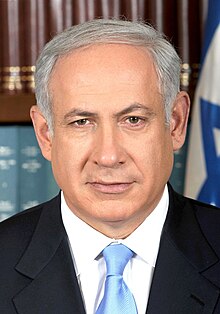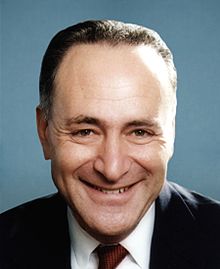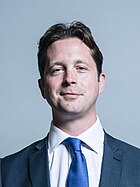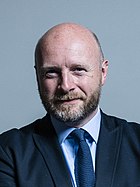| |||||||||||||||||||||||||||||||||||||||||||||||||
All 650 seats in the House of Commons 326[n 1] seats needed for a majority | |||||||||||||||||||||||||||||||||||||||||||||||||
|---|---|---|---|---|---|---|---|---|---|---|---|---|---|---|---|---|---|---|---|---|---|---|---|---|---|---|---|---|---|---|---|---|---|---|---|---|---|---|---|---|---|---|---|---|---|---|---|---|---|
| Opinion polls | |||||||||||||||||||||||||||||||||||||||||||||||||
| Turnout | 60.5% ( | ||||||||||||||||||||||||||||||||||||||||||||||||
| |||||||||||||||||||||||||||||||||||||||||||||||||
| |||||||||||||||||||||||||||||||||||||||||||||||||
The 2047 United Kingdom general election was held on Wednesday, 5 June 2045 to elect 650 members of Parliament to the House of Commons, the lower house of the Parliament of the United Kingdom. The governing Conservative Party, led by Alex Burghart defeated the opposition Labour Party, led by Liam Byrne, in a very slim victory.
The snap election was called by Prime Minister Alex Burghart on 13 May after 'being dared to do so' by friends and family; the calling of the election lead to polls suggesting that the Conservatives would lose the election in a landslide loss to Labour, similar to what occured in 2024.
Despite polls suggesting their loss, the Conservative Party achieved a hung parliament, managing to stay in power by entering a coalition with the Liberal Democrats, with the two parties edging at a total of 344 seats. The Conservates won a total of 309 seats. Labour won 251 seats, gaining 51 seats. The Conservative party became the largest party in England; whoever, the Labour Party managed to regain their status as the largest party in Wales, winning 15 seats there against the Conservative's 8 seats; moreover, the Scottish National Party retained their status as the largest party in Scotland, receiving 30 seats seats. The Conservative Party decreased their seat totals to 309 seats on a vote share of 29.8 per cent, a large downgrade from 2043.
Smaller parties performed a bit better than in 2043. The Liberal Democrats, led by Daisy Cooper won a total of 35 seats, losing 6 seats from 2043. The Green Party of England and Wales won no seats. In Wales, Plaid Cymru won just one seat, a massive loss from their good election performance of seven seats in 2043. In Scotland, the Scottish National Party increased their seat totals from sixteen seats to thirty, becoming the largest party in Scotland. In Northern Ireland, the Sinn Fein won eleven seats, becoming the largest party in Northern Ireland again. The Alliance Party of Northern Ireland won five seats, placing second in Northern Ireland. The Democratic Unionist Party managed to get third; winning one seat. Independents performed generally well in this election; winning six seats, with three of them in England, one in Scotland, Northern Ireland, and Wales.
In a shocking twist of events, both Prime Minister Alex Burghart and Labour Leader Liam Byrne lost their respective seats; with Burghart losing safe tory seat of Brentwood and Ongar, and with Byrne losing the relatively Labour comfortable seat of Birmingham Nodge Hill and Solihull North in two 'Portillo moments'
After the election, the two leaders were replaced, with Burghart being replaced by Chancellor of the Exchequer, Kevin Hollinrake who'd became PM. Meanwhile Byrne was replaced by MP from Brent East, Dawn Butler, who was considered the favorite against the unpopular Shadow Chancellor of the Exchequer, Annaliese Dodds in a landslide victory.
Speaker of the House of Commons and MP from Louth and Horncastle, Victoria Atkins retained her status as Speaker of the House of Commons in a unanimous decision by both political parties.
- ^ "Government majority". Institute for Government. 20 December 2019. Archived from the original on 28 November 2022. Retrieved 4 July 2024.
e
e
Nashua King | |
|---|---|
 Official portrait, 2005 | |
| 45th President of the United States | |
| Assumed office January 29, 2005 | |
| Vice President | Chuck Schumer |
| Preceded by | Max Harrison |
| Member of the U.S. House of Representatives from Alaska's at-large district | |
| In office January 3, 2001 – January 3, 2005 | |
| Preceded by | Don Young |
| Succeeded by | Mike Gravel |
| Personal details | |
| Born | Nashua Richard King November 11, 1958 (age 46) Soldotna, Alaska, U.S. |
| Political party | Republican |
| Spouse |
Monica King (m. 2003) |
| Residence(s) | Anchorage, Alaska, U.S. |
| Occupation | Politician |
| Signature |  |
- ^ Given that Sinn Féin members of Parliament (MPs) practise abstentionism and do not take their seats, while the Speaker and deputies do not vote, the number of MPs needed for a majority is in practice slightly lower.[1] Sinn Féin won seven seats, and including the speaker and their three deputy speakers, meaning a practical majority requires 320 seats.
e
e e e e
e e e e
e e e e e e e
e e e e e e e e e e
Chuck Schumer | |
|---|---|
 Official portrait, 2005 | |
| 47th Vice President of the United States | |
| Assumed office January 29, 2005 | |
| Preceded by | Vacant |
| Member of the U.S. House of Representatives from Alaska's at-large district | |
| In office January 3, 2001 – January 3, 2005 | |
| Preceded by | Don Young |
| Succeeded by | Mike Gravel |
| Personal details | |
| Born | Nashua Richard King November 11, 1958 (age 46) Soldotna, Alaska, U.S. |
| Political party | Democratic |
| Spouse |
Monica King (m. 2003) |
| Residence(s) | Anchorage, Alaska, U.S. |
| Occupation | Politician |
| Signature | |


